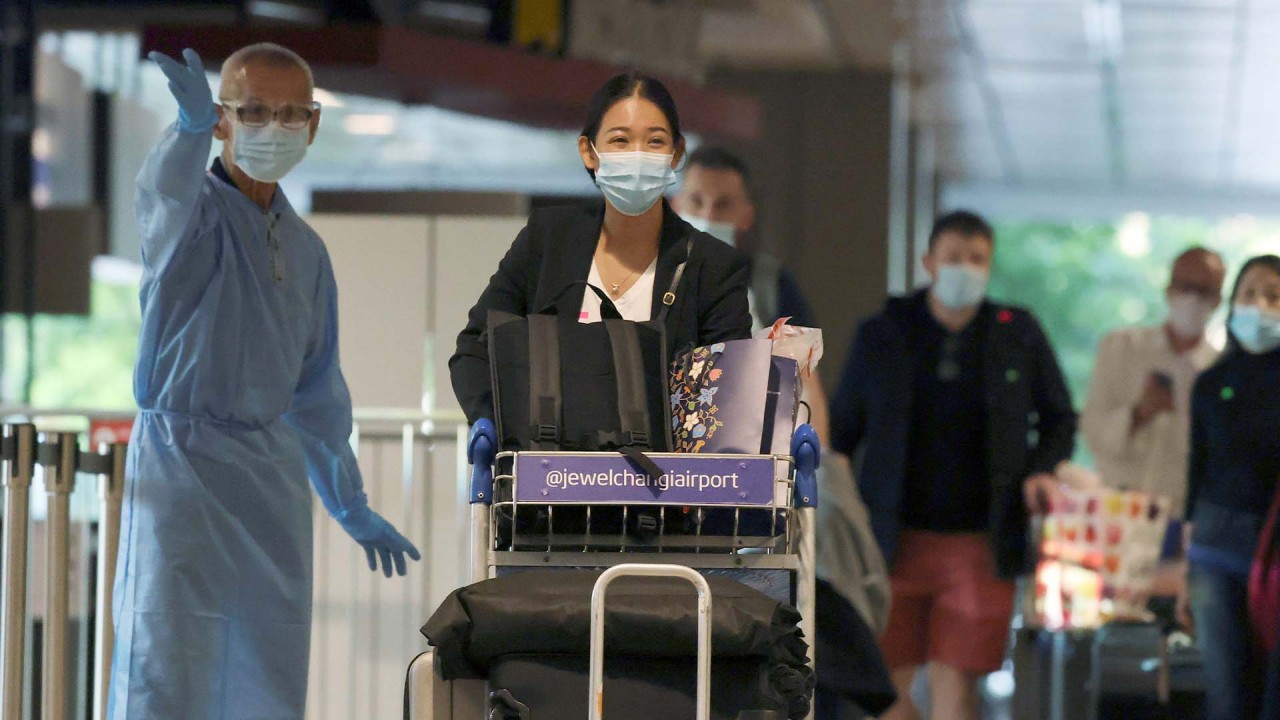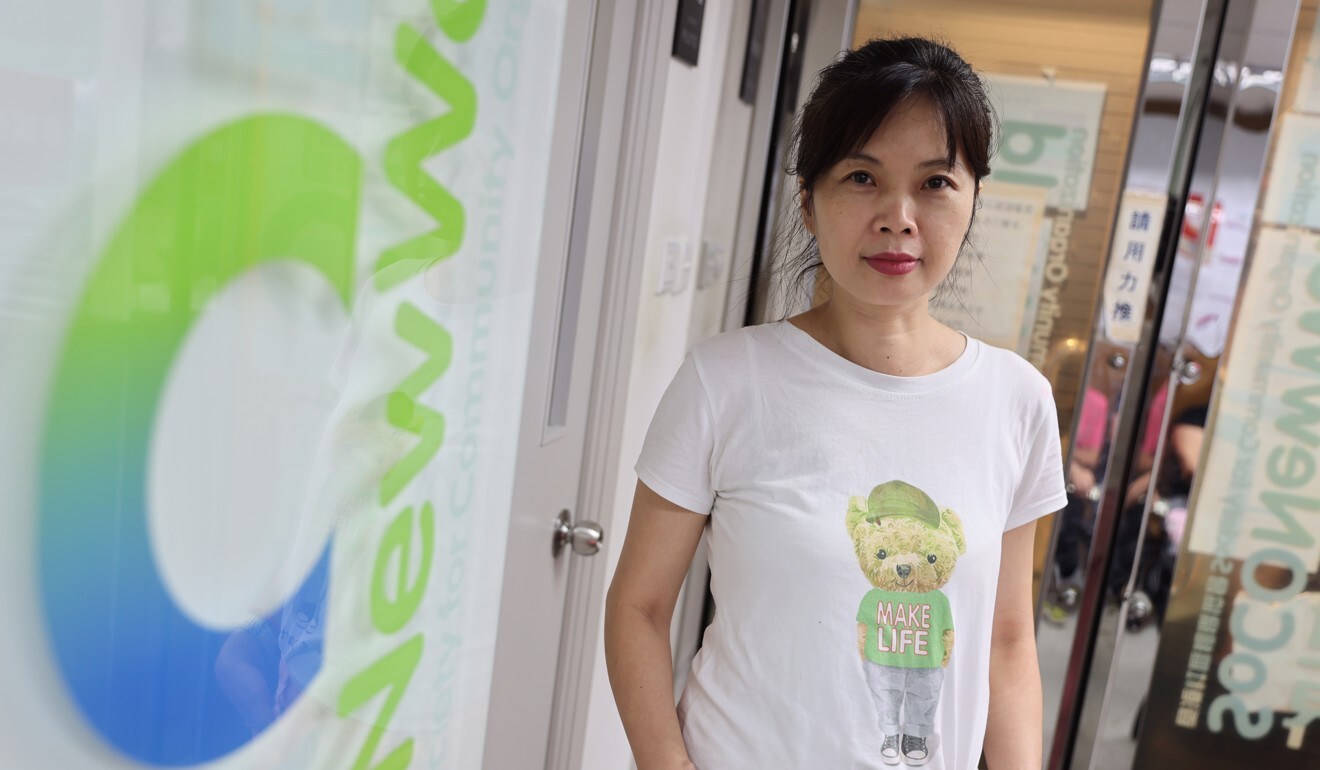
Coronavirus: Hong Kong leader Carrie Lam says she expects reopening of border with mainland China to enable ‘mass events’ by February
- Lam tells business leaders she hopes cross-border flow of people will be high enough for government to stage major events marking Greater Bay Area anniversary
- Gradual resumption of quarantine-free travel being discussed between Hong Kong and mainland, but movement will initially be limited to within Guangdong province
Hong Kong’s leader has said she expects quarantine-free travel between the city and mainland China to reach such a level by February next year to enable the government to hold major events attended by businesspeople based either side of the border.
Speaking a day after the Post revealed that a preliminary reopening of the border could come as early as next month, Chief Executive Carrie Lam Cheng Yuet-ngor said on Friday the most pressing matter was for Hong Kong’s business community to be able to take commercial trips to the mainland without undergoing quarantine.
A large forum bringing together businesspeople from across southern China is among the events the government hopes to stage in early 2022 as a way of marking the anniversary of the formulation of the bay area’s development framework.
On Thursday, Beijing confirmed that both sides had reached “significant consensus” over reopening their border.
“Both sides met each other halfway and the full reopening of the border is progressing in an orderly manner,” a spokesman for the State Council’s Hong Kong and Macau Affairs Office said.
Hours earlier the Post reported that the first phase would be limited to Guangdong province for Hong Kong travellers, with Shenzhen as the only entry point.

02:07
Singapore adds 8 more countries to quarantine-free list for vaccinated travellers
In a separate interview with the Post a day ago, Lam confirmed the latest development, stressing that the resumption of quarantine-free cross-border travel would be “gradual”.
The arrangements would be implemented under a quota system, she added, with priority given to business exchanges.
Asked whether the border would reopen by the end of the year, Lam said: “I hope very much so. But I just can’t promise it. We are still in discussion.”
In a press release issued at around the same time as the one by the affairs office, the Hong Kong government said local experts and officials met their mainland counterparts via video conferencing on Tuesday, noting that the exchange was “constructive”.
“Travellers from Hong Kong could go to other cities in Guangdong province after arriving in Shenzhen if they have valid health codes and meet other requirements, which are being finalised,” the insider said. “If the Hong Kong government manages a smooth roll-out of the system, we might see the first trial of such an arrangement in mid-December.”
Sources said officials and experts from both sides held discussions online in a bid to advance progress talks after the first meeting in Shenzhen on September 26, but no date has been finalised for the next round yet. Officials said on Thursday the latest conversation was “conducive” for a second meeting.
Pressure has been steadily mounting on Hong Kong authorities to work towards reopening the border, particularly from the many residents who have business and family ties on the mainland.
The chief executive said better contact-tracing ability and a higher vaccination rate would help Hong Kong convince mainland health experts to support the resumption of quarantine-free travel.
Having received two Sinovac jabs earlier, Lam revealed that she would take a booster shot next week and stick to the Chinese-made vaccine instead of taking the German-manufactured BioNTech alternative.
“There is a myth about a high count of antibodies. My doctor told me it’s not the higher the count of antibodies, the better, but whether there are enough,” she said.
Health authorities on Thursday confirmed seven new coronavirus infections, all imported, taking the official case tally to 12,359, with 213 related deaths. Among the fresh cases were two sea crew members from India and a domestic helper from Indonesia. The rest arrived from Pakistan and Nepal.
According to the mainland health official, another online meeting is expected to be held next week to iron out the details of a tracking mechanism for travellers from Hong Kong, and the classification of their coronavirus risk levels.
Discussions were also continuing on criteria for suspending the mechanism should the need arise.
Those suspected of having Covid-19 or who have tested positive, the patients’ close contacts, their close contacts and people undergoing quarantine would be issued a “red code”, meaning there is a high risk of infection and they would not be eligible for the scheme.
People living in the same building or vicinity as a confirmed case would be issued a “yellow code” and would also not be allowed to participate.
On the mainland, Guangdong residents returning from cities with areas where the National Health Commission deems the Covid-19 risk high or moderate are assigned the same colour code.
One of the requirements is that people crossing the border must use a contact-tracing app that gives mainland authorities the ability to track their movements.
Joe Chau Kwok-ming, president of the Hong Kong General Chamber of Small and Medium Business, welcomed news of the scheme, noting tens of thousands of company owners had been unable to visit their factories or offices across the border for the past 21 months.
“It is a breakthrough,” he said of the negotiations. “We will evaluate what the requirements are and the development of the Covid-19 outbreak on the mainland before making a decision on whether to travel to China.”
Howard Kwok, co-founder of wine trading start-up StockVins, said the company’s largest shareholder and founder would visit Guangzhou as soon as the border reopened, after its senior executives were unable to travel in person to deal with a series of human resources issues at its mainland offices.
Management could not afford to spend 21 days in compulsory quarantine because of the overwhelming workload in Hong Kong, he added.
“We have waited for more than a year to cross the border, but all the crucial human resources matters cannot be resolved until we travel to Guangzhou in person,” he said. “We are desperate to cross the border.”
Kwok said executives would not mind using any contact-tracing app and would meet other criteria to be eligible for the scheme.

Sze Lai-shan, deputy director of the Society for Community Organisation, said she understood that many people who had family on the mainland would not really mind where they crossed the border, though some were used to taking direct buses from Hong Kong’s city centre to other parts of Guangdong before the pandemic struck.
“Now they will still take other ways to transit at Shenzhen. Having the option of quarantine-free travel is still better than nothing,” Sze said.
She estimated opening up Guangdong province would cover the travel needs of about 50 to 60 per cent of Hong Kong families with mainland ties.




